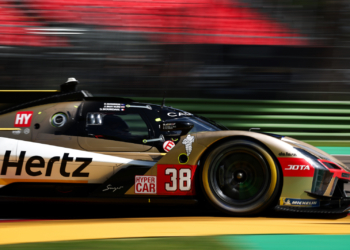Prospective LMH manufacturer Scuderia Cameron Glickenhaus has raised questions over both the performance and costs involved with the joint LMDh platform set up by the ACO and IMSA.
The American boutique supercar maker, which is developing its 007 for Le Mans Hypercar ahead of the new category’s debut in early 2021, questions if the LMDh format will be as fast as LMH while also doubting if it is the affordable option like the governing bodies have claimed.
“We are supportive of any efforts by the ACO, the WEC and others to increase access for fans and manufacturers to be able to race these incredible cars in more venues,” Glickenhaus told Motorsport Week. “We also appreciate efforts to keep the costs manageable to allow more manufacturers and privateers to join.”
In the draft technical regulations released last week, IMSA stated that it would welcome LMDh cars, while also open to LMH entries by major manufacturers once performance could be further evaluated. Glickenhaus doubts this approach, saying:
“IMSA, on the other hand, appears less keen on allowing increased competition from the LMH vehicles. Perhaps they are scared because they know the LMH’s will be faster.
Perhaps they are embarrassed because they know our vehicles will likely be more economical to purchase and race. They have stated they will be the most affordable option, they have yet to announce a final price for a customer LMDh vehicle or its running costs.”
Questions over LMDh performance compared to LMH were also raised by the Connecticut outfit.
“We do think it will be a challenge to balance the performance of the LMH and the LMDh cars, even with the lower HP and weight,” the team continued.
“Our LMH will cost 2 million Euros to purchase, and due in part to the extremely under-stressed Pipo [Moteurs] engine, will have running costs lower than other cars. We are in discussions with both private teams and manufacturers who are interested in collaborating on using our platform to develop their own LMH vehicles.”
“The LMDh cars, in contrast, appear to be closer to how DPIs/LMP2 have always been designed and engineered. Sure, they are relatively quick, but our simulations show that, unlike our car and Toyota’s, there is no way they will be able to run 3:30 laps at Le Mans during a race or faster for qualifying on the currently planned tire compounds.
I wouldn’t be surprised to see those times slowing down by 5 to 10 seconds a lap so that the LMDh cars can keep pace with the LMH cars. If this happens, the LMDh’s will be around the same pace as the current LMP2s.”
The performance of the new top category compared to LMP2 competitors has long been a concern as the more road car-based approach adopted for both LMH and LMDh would mean the cars would lose significant performance compared to the current generation of LMP1 machinery.
To prevent any performance clashes between LMH/LMDh and LMP2, the ACO announced a performance cut to LMP2 in December 2019. Under current specifications, the LMP2 machinery by ORECA, Dallara, Ligier and Multimatic produces roughly 600 hp, but this was confirmed to be altered for what was originally supposed to be the 2020/21 season.
The ACO wrote at the time that LMP2 performance would be cut by 30 kW (40 hp), bringing them down to 560 hp. Under current rules, this is 110 hp less than the proposed power output for both LMH and LMDh.








